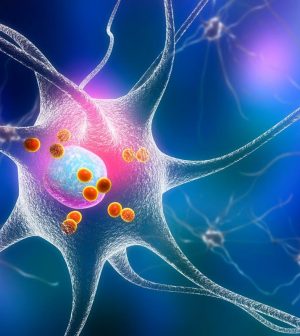- Skip Storing This Everyday Product in the Fridge Door
- Green Tea + B3 Pairing May Boost Brain Health
- Navigating Your Midlife Crisis: Embracing New Possibilities
- City Raccoons Showing Signs of Domestication
- Mapping the Exposome: Science Broadens Focus to Environmental Disease Triggers
- One Week Less on Social Media Linked to Better Mental Health
- Your Brain Changes in Stages as You Age, Study Finds
- Some Suicide Victims Show No Typical Warning Signs, Study Finds
- ByHeart Formula Faces Lawsuits After Babies Sickened With Botulism
- Switch to Vegan Diet Could Cut Your Greenhouse Gas Emissions in Half
In Mouse Studies, New Clues to How Brain ‘Refreshes’ Memories

Memories are constantly adapting in the brain over time, dynamically updating as people encounter new information and fresh experiences.
Researchers think they’ve figured out the brain mechanism that drives this memory integration, based on a study of lab mice.
The discovery improves understanding of mental illnesses like post-traumatic stress disorder (PTSD), in which memories torment sufferers, researchers said.
“We’ve taken a major step in the direction of better understanding real-world memory, where we know that our memories are constantly being updated and remodeled with subsequent experience so that we can function day-to-day in a dynamic world,” said senior researcher Denise Cai, an associate professor of neuroscience with the Icahn School of Medicine at Mount Sinai in New York City.
In the study, researchers tracked the behavior and brain activity in the hippocampus of adult mice as they learned and consolidated new experiences into their memories. The hippocampus is the part of the brain responsible for memory and learning.
They discovered that after each event, the brain consolidates and stabilizes a memory by replaying the experience.
And after a negative experience, the brain replays not just that event but memories from days earlier, searching for related events to link together and integrate into memory, researchers said.
“The long-held view is that memories are formed during initial learning and remain stable in neural ensembles over time, enabling us to recall a particular experience,” Cai said in a Mount Sinai news release.
“Our work with mouse models shows the inadequacy of this theory, since it doesn’t account for how the brain can both store memories while flexibly updating them with new and relevant information,” Cai added. “This combination of stability and flexibility within neural ensembles is critical for us to make everyday predictions and decisions, and to interact with an everchanging world.”
As part of the study, mice experienced a bad event like receiving a shock to their foot, researchers said.
That negative experience drove reactivation of not only the adverse memory it created, but also of a non-threatening memory formed days earlier, results showed.
“We learned that when mice were resting after a highly negative experience, they simultaneously reactivated the neural ensemble of that experience and the past neutral memory, thus integrating the two distinct memory modalities,” Cai said. “We refer to this phenomenon as ensemble co-reactivation, and now know that it drives the long-term linking of memories in the brain.”
Contrary to earlier studies that suggested sleep benefits memory, researchers found that these memory linkages occurred more often while mice were awake than asleep.
The research also showed that bad experiences were more likely to be linked with past memories, and that more intense negative events were more likely to drive retrospective memory-linking.
The new was published Nov. 6 in the journal Nature.
More information
The Cleveland Clinic has more about the hippocampus.
SOURCE: Mount Sinai School of Medicine, news release, Nov. 6, 2024
Source: HealthDay
Copyright © 2025 HealthDay. All rights reserved.










